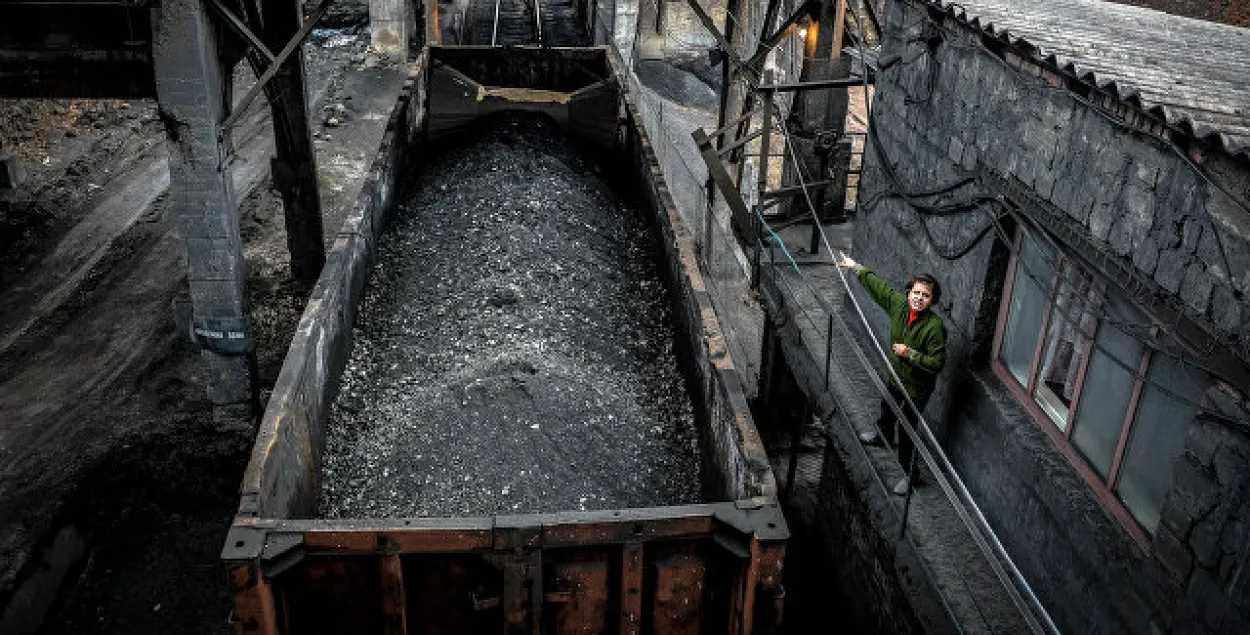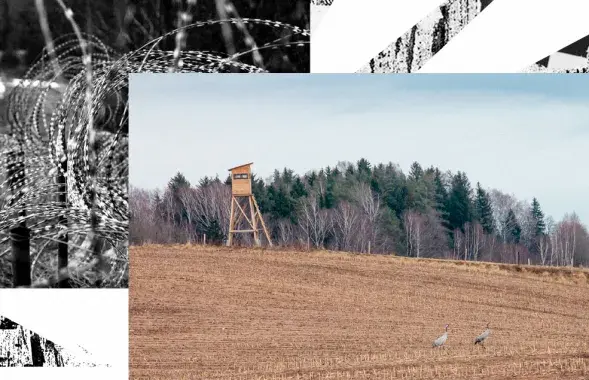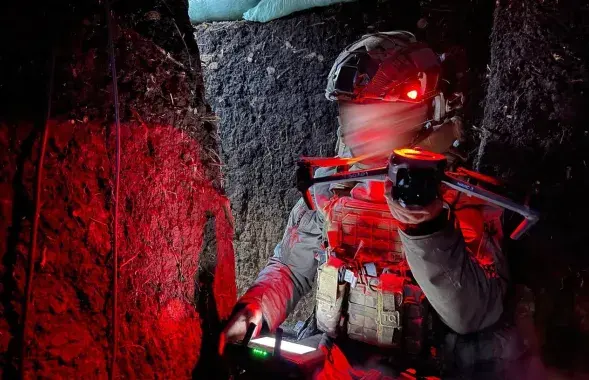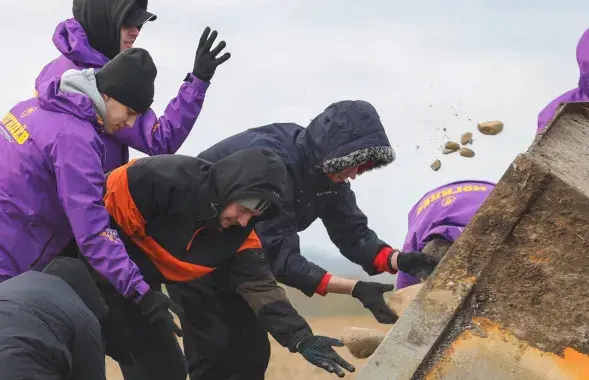Fact-check: Belarus' role in hard coal supplies from Ukraine's occupied areas

Photo: ria.ru
Belarusian and Polish media recently accused Belarus of re-exporting anthracite, also known as hard coal, mined on the territory of the so-called ‘DPR’ and ‘LPR’ in eastern Ukraine thrice last month. Is Belarus really making money on the anthracite trade with the unrecognized ‘DPR’ and ‘LPR’? Euroradio has verified for you.
Donets Basin coal does reach Poland from Belarus
Ukrainian Minister of Energy Igor Nasalik confirmed in October 2017 that anthracite from some areas of Luhansk and Donetsk Regions outside of Ukraine’s control is transported to Poland. Poland did buy hard coal from the so-called ‘DPR’ and ‘LPR’ but the amount was small - about 11 thousand tons, his Polish counterpart Krzysztof Tchórzewski said back then.
Polish journalists conducted their own investigation and said that the amount was much bigger. Furthermore, Donets Basin coal is said to be getting into Poland from Belarus.
"As far as we know, Poland received 282 thousand tons of Donets Basin anthracite in October 2017 – July 2018," reporter of Dziennik Gazeta Prawna Michał Potocki claims. "Poland is No.4 on the list of the countries buying coal from the territories occupied by separatists. Turkey is in the first place, followed by Romania and Belgium. We also know that almost 100% of Donets Basin anthracite is transported to Poland from Belarus."
Belarus is a transit territory in the supply logistics
The K-Investments company from Zielona Góra (Poland) that imported 3071 tons of Donets Basin anthracite to Poland in October 2017 has confirmed the information. The company ‘does not cooperate with Belarusian companies, it only works with the Russian ones’, a representative of K-Investments said. They refused to name the companies under the confidentiality clause.
Michał Potocki holds the same opinion:
"The company RZhD Logistika that is part of the Russian railways is in charge of the transit [export of Donets Basin coal to Poland and other EU member states. – Euroradio]. The companies selling this coal are registered in Rostov Oblast, Moscow or even in the so-called ‘DPR’. The coal is purchased by companies registered in Poland.
Some of the companies only own Polish capital while others have traces of the capital belonging to people connected with separatist organizations – they either made their capital at the beginning of the warfare in Donets Basin or are simply doing business using the money made on the territories of Donetsk and Luhansk Oblasts that are controlled by Ukraine. We have no information about Belarusian companies participating in the transit of Donets Basin coal from Russia to Poland. RZhD Logistika may simply be paying the Belarusian railways for the transit and usage of the Belarusian infrastructure.”

How to distinguish between ‘separatist’ and ‘Russian’ anthracite
It is impossible to tell the origin of anthracite if you look through transit accompanying documents (TAD). As soon as Donets Basin anthracite gets to the territory of Rostov Oblast (Russian Federation) it turns into Russian anthracite. There are a few anthracite fields in Russia. That is why Belarusian customs officials cannot be sure of the origin of such anthracite.
It is possible to find out the origin of anthracite because the chemical composition of Donets Basin and Kuznetsk Basin anthracite is different. Specialists can even find out from what mine it was extracted. Yet, it is not being done at the Belarus-Poland border. The same happens when ‘Russian’ anthracite is transported via Belarus… to Ukraine!
"They simply check the TAD at the Ukrainian border and if it is written that the anthracite is Russian then it can be imported. Sometimes SBU [Ukraine's Security Service] may suspect a given company of suppling Donets Basin anthracite. In that case, they run an anthracite sample through a lab test. Donets Basin anthracite was detected in some cases. However, it is not something that is done on a regular basis,” Michał Potocki says.
Ukrainian journalist Andrei Gerus disagrees with his Polish colleague.
"Many Ukrainian heat power stations that used to burn anthracite have switched to the gas group of coal (“G”). Our state companies receive anthracite from the USA. DTEK (Dnieper electricity supply network) uses anthracite extracted from its mines in Rostov Oblast. DonbassEnergo buys coal from Kuznetsk Basin and the USA. As far as I can see, there is hardly any transit of Donets Basin anthracite via Belarus. The customs declarations we look through also testify to the fact that there are no such supplies. Donets Basin coal is very specific and it contains more sulfur. If such anthracite were imported to Ukraine via Belarus it could be visible. In my opinion, we are not getting this coal.”
The Ukrainian Security Service has neither refused nor confirmed the cases of import of ‘Donets Basin anthracite’ from the Belarusian territory. Euroradio has received a formal and shallow response from SBU: “The investigator has forbidden to reveal any information as regards this issue to avoid compromising the investigation.”
The response shows that some of the lots of anthracite imported to Ukraine via Belarus did arouse SBU’s suspicion. Yet, the organization would not say whether the anthracite had been extracted in Donets Basin.
Trade with ‘the temporarily occupied territories’ is forbidden in Ukraine. However, nothing is violated when the supplies are meant for the European Union: the EU has not introduced any restrictions of the kind. Even Polish companies buying ‘DPR’s’ and ‘LPR’s’ anthracite are legally in the clear.
What do the official statistics say?
Belarus imported 72 thousand tons of anthracite from Russia in 2017, Belstat reports. The nearest anthracite field is situated in Rostov Oblast. A staging post where Donets Basin anthracite transforms into “Russian” anthracite is situated there, Michał Potocki asserts.
"We have found out that 15 thousand tons of Donets Basin anthracite was delivered to Belarus in October 2017 – July 2018,” Michał Potocki notes.
15 thousand tons out of 72 thousand tons is about ⅕ of all the anthracite imported from Russia. Yet, even this part has not left the territory of Belarus, the official statistics say. Belarus exported 346 tons of anthracite in 2017, Belstat reports. 46 tons was exported to Poland and 276 tons – to Ukraine.
Why does Belarus need anthracite? We will look into it a bit later. Thus, the official statistics cannot be used to prove that Belarus sells Donets Basin anthracite to the European Union.
It is unlikely, Ukrainian journalist Andrei Gerus agreed.
"Steam coal is extracted on the occupied territory of Donets Basin. Such coal is hardly ever supplied in lots of dozens of tons. The lots usually reach thousands of tons.”

Why does Belarus need so much Russian anthracite?
Research supervisor of the Energy Institute of the Belarusian Academy of Sciences Alyaksandr Mihalevich could not answer this question in an interview with Euroradio:
"I have no idea where did Belstat get those numbers [72015 tons of Russian anthracite. - Euroradio] since steam coal is not used in our power generating systems. We use natural gas and wood. Anthracite is usually used in metallurgy. Yet, Belarus mostly uses electro-metallurgy. It means that there is no sense in using anthracite in Belarus at the moment. It used to be needed by cement plants but they have already switched to municipal solid waste.”
The most logical explanation to it is the idea that Belarusians buy Russian anthracite for personal use. For instance, it can be used to heat private houses. The idea that 70 thousand tons could be sold abroad without being mentioned in Belstat’s statistics seems unfounded. After all, it is a thousand carriages.
Does Belarus make money on anthracite trade with ‘DPR’?
The answer is yes and no.
Donets Basin anthracite is really supplied to Poland via Belarus. However, our country is only a transit territory.
It is very difficult to calculate the money Belarus made on the transit in, say, 2017: a lot of factors affect the cost of transit of every carriage – from the season to the number of locomotives used in every train.
The fact of supplies of Donets Basin anthracite to Ukraine via Belarus has not been proved. Yet, even if such supplies did happen, our country could only make money on them as a transit territory.
"If somebody forges documents (to turn Donets Basin coal into Russian coal), such coal may get to Belarus and be transported to other states. Yet, I do not believe that Belarus would help legalize coal from the occupied territories at the governmental level,” Andrei Gerus summed up.
Photo: iz.ru
Supported by Russian language news exchange


















